The Glashütte Original Panoramadatum, A Small Complication That Made It Big
When the simplest of complications becomes a signature display.
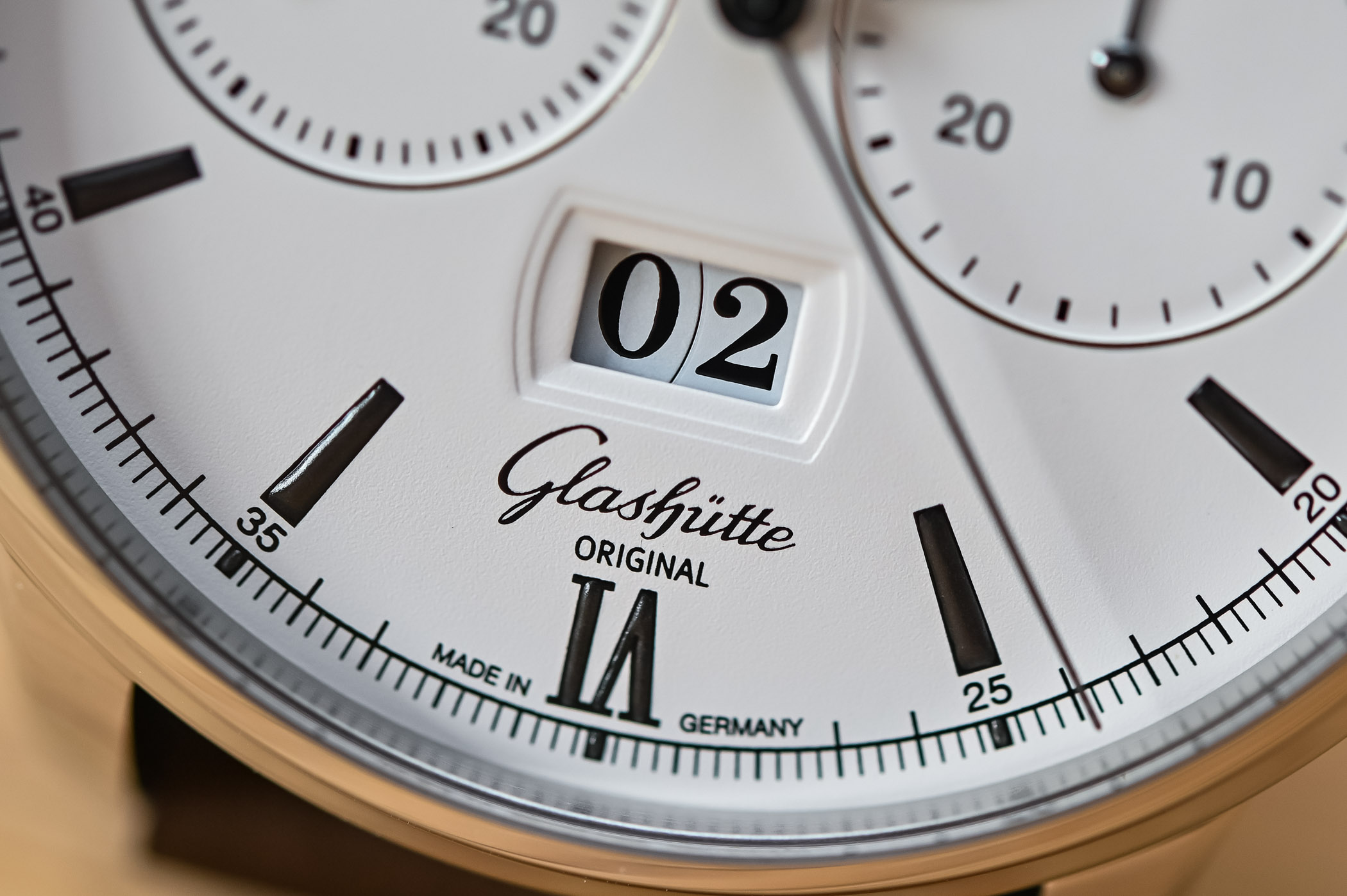
There is a widespread opinion that the date indicator in the absence of other calendar functions violates the “original purity” and “balance” of the classic dial. It is only accurate when little thought is given to the design and the execution. The famous Panoramadatum, an off-centred large panoramic date window by Glashütte Original, can quickly convert the most hard-line sceptics and make them love the date complication. The signature large date display from the German manufacture turns 25 this year, and we join in the celebration.
The big date is present in many watch collections at many brands. A quick search opens up a vault of past and contemporary references, and A. Lange & Söhne, a Glashütte-based manufacturer, comes in second in an imaginary competition for the prettiest big date display window.
What makes the Glashütte Original Panoramadatum stand out from the rest is how it is done and what we see on the dial. The big difference is, in fact, relatively small. Most companies use a system of two discs with numerals – one for 0 to 3, another for 0 to 9 – that sit concentrically on one axis but on different levels or two different axes, set apart. Both solutions produce the same effect; the two digits that make up the date look separated, sometimes in a very noticeable manner.
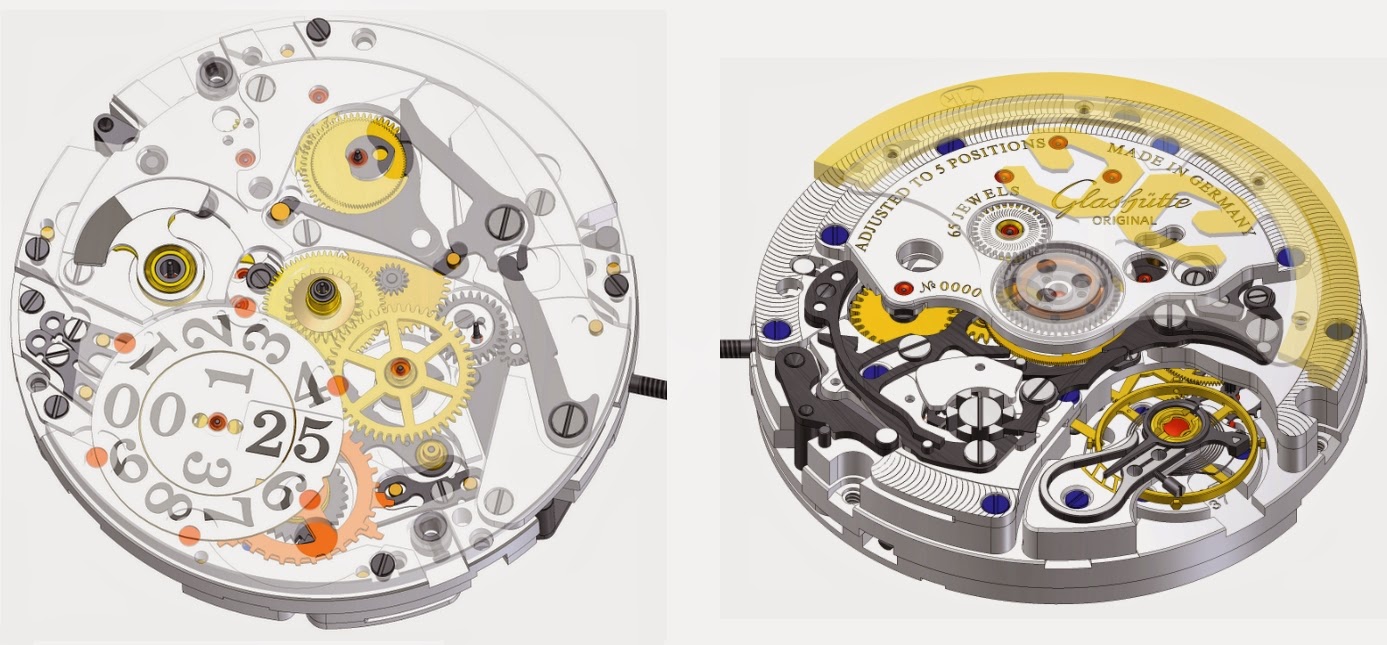
In 1997, Glashütte Original presented its eye-pleasing solution. Two concentric date discs are positioned on the same axis and level. This way, only a slim and hardly visible (0.06mm) line separates the digits, so the large date looks very neat – and there is no need to position the vertical bar in the middle of the date aperture frame to conceal the gap, as other brands do. The brass discs are paper-thin and made in the brand’s manufacture. The numerals are pad-printed after the discs get the needed colour. Their surface is galvanised or coated, a process requiring skill and precision. The paint layer may interfere with function if applied too quickly, and without proper caution, there is a risk of friction. The discs may rub against each other and eventually lock up. A technical solution to serve the aesthetics, chapeau! Or should we say “Hut”?
The date indicator is the most common complication in a mechanical watch, but it is still a complication and must function correctly. The module developed by Glashütte Original for the large date display provides an aesthetically pleasing dial design and is built to be user-friendly.
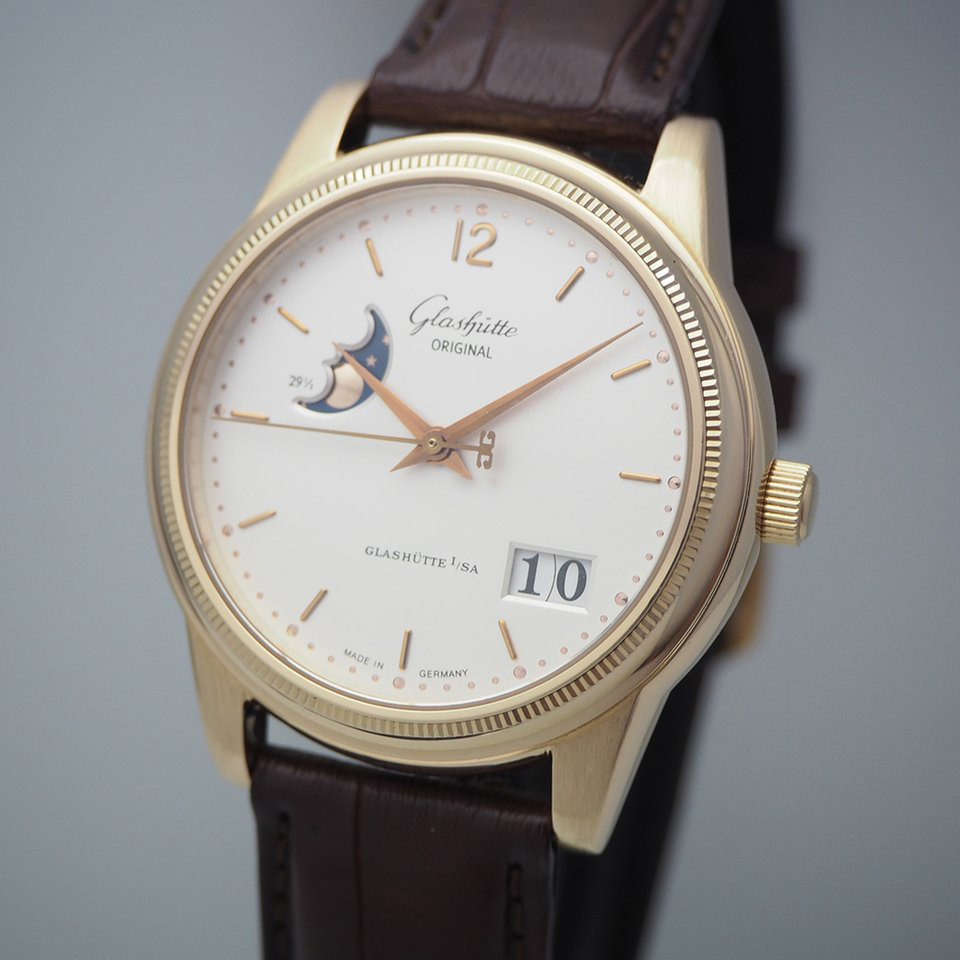
The appeal of the Glashütte Original’s large date is, well, large, and it is no surprise that practically every collection features references with this minor complication. Introduced 25 years ago in the Senator Panorama Date model, the signature off-centred large panoramic date window now accompanies power reserve indications, moon phases, chronographs, and calendars and even shares space with tourbillons. The Pano collection represents the essence of Glashütte Original’s exceptional traditional watchmaking paired with contemporary designs, and it offers a variety of references to satisfy the most lustful.
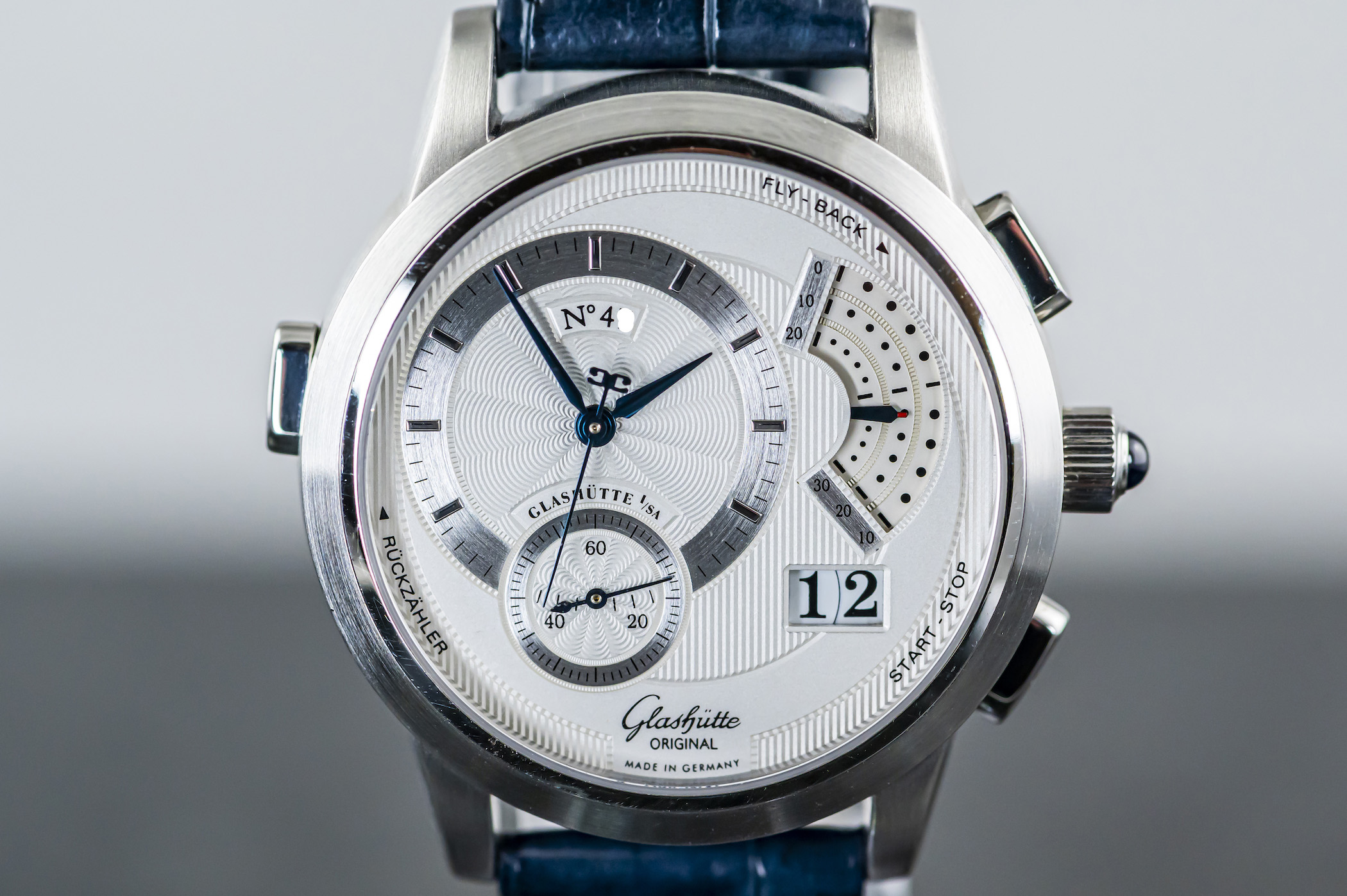
The Pano collection made its first appearance in 2001 with the PanoRetroGraph, a flyback chronograph with a column wheel; it featured a 30-minute countdown and a triple-repetition chime that proclaimed the end of a timed event. The PanoRetroGraph was a limited edition with 50 pieces in platinum and 150 in white gold. In 2002 a reference in red gold with a silver dial was offered, and in red gold with a black dial in 2004, but it has been discontinued. Collectors seek it as an exciting timepiece with the characteristic asymmetrical dial, which set the ground for the PanoGraph line, the immediate successor, introduced in 2002. It had no acoustic complication; still, it is a marvel of German engineering art and an exemplary timepiece for finishing and attention to detail.
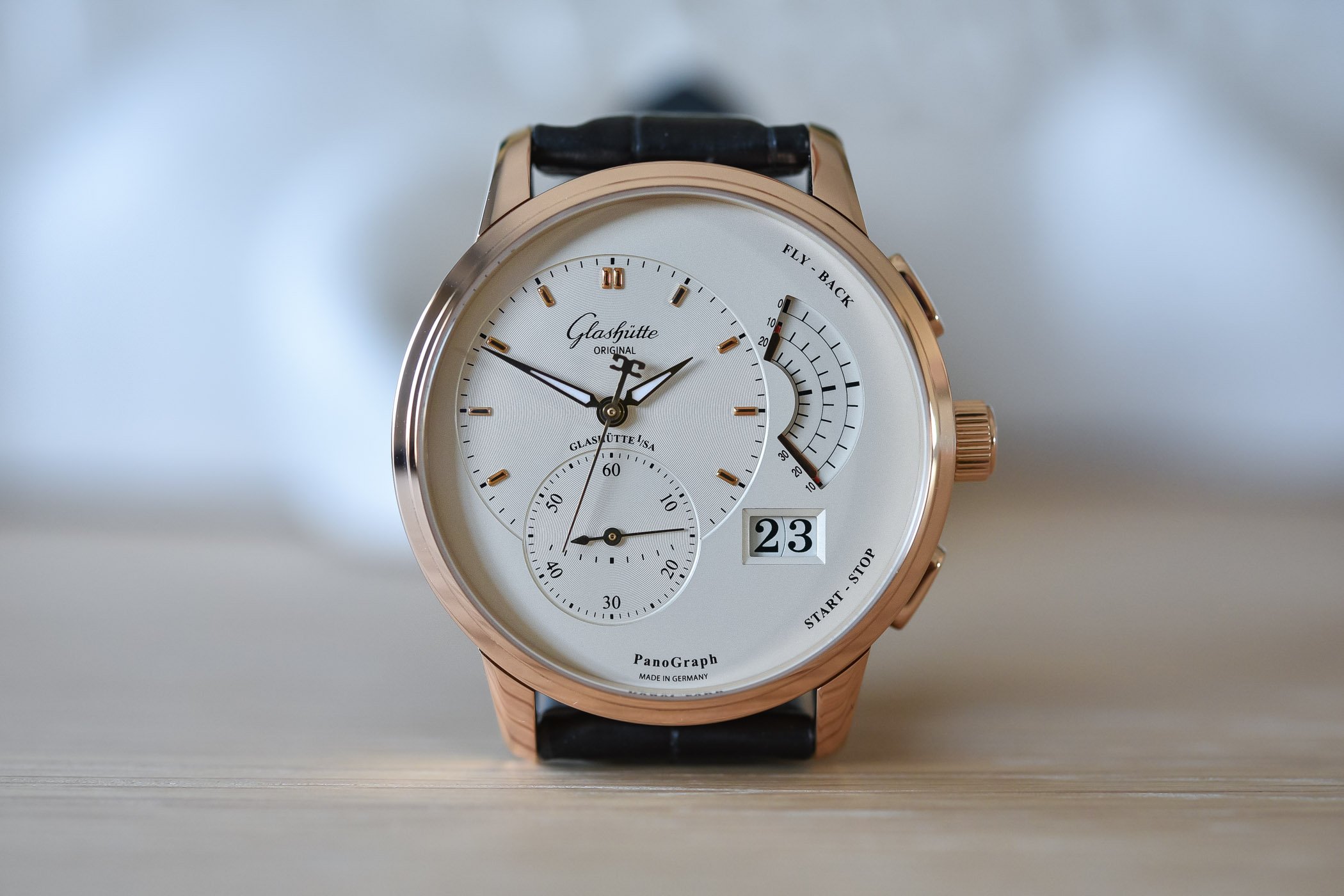
The PanoGraph got a “facelift” in 2012 along with other Pano-collection references: the case diameter was increased; the sub-dial peripheral rings were removed; and water-resistance was increased to withstand 5 bar. So what GO is offering now is the updated version of the original (the 2002 premiere PanoGraph edition was cased in steel and retailed for about 15k euros, unfortunately, this “combination” is no longer part of the collection).
The PanoGraph today is a watch with a round 40mm three-piece red gold case, soldered lugs, and polished and satin-brushed surfaces. Combining these finishing techniques produces rich and aesthetically pleasing reflections. The dial layout is taken from the PanRetroGraph, with an asymmetrical design that is very well balanced and clean, with plenty of space to show different finishing styles. The hours and minutes sub-dial also carries the chronograph seconds hand, with the sub-seconds below overlapping and forming an eight on the left. On the right side of the galvanic silver dial, a sector display shows the elapsed chronograph timing (30-minute counter), and the panorama date is at about 4 o’clock position. The date display is the highlight, no matter what other indication or complication we see on the dial side. The movement, visible through the transparent caseback, is the remarkably finished in-house manual-winding GO calibre 61-03. It has driven the PanoGraphs since the introduction of the series in 2002.
2002 was also the birth year of another public favourite Glashütte Original with the Panoramadatum display, the PanoReserve.
As with the other models in the collection, in 2012, GO rightly removed the perimeter rings that ran along the edges of the subsidiary dials and indications. This tune-up immensely improved the aesthetics, and the dial’s legibility increased. The indications and their distribution on the dial remained the same. Occupying most of the dial, to the left and towards the top, a subsidiary dial with applied indices shows the hour and minute indications. Slightly overlapping and positioned below it, a smaller sub-dial houses the small seconds. The panorama date appears at 4 o’clock, and the power reserve indicator is in the upper right area.
The calibre of the PanoReserve series did not change from the 2002 version and continues to be the in-house manufactured GO 65-01 with manual winding, with a somewhat limited 42 hours of power reserve. Still, the large date display is the biggest attraction here.
The launch of the PanoMaticLunar with a moon phase indicator in 2003 was a success, and it still is the bestseller for Glashütte Original. Many believe it has become the brand’s defining watch. The Glashütte Original PanoMaticLunar is immediately recognisable, the dial arrangement is the same as with the PanoReserve, decentralised, and its design is based on the golden ratio, like with all the watches in the collection. It provides excellent legibility, with all the dial elements contributing to the unique style. The PanoMaticLunar has all the signature elements of the Pano collection: a big date display with an off-centre dial for the hours and minutes and an overlapping sub-dial for the running seconds. The moon phase, with the Moon waxing and waning in a crescent-shaped window, is at 2, with the Panoramadatum display right under it at 4 o’clock. The moon phase indicator, this romantic complication, softens the feel of a meticulously constructed, well-thought-through, cold-minded German time instrument. Not that any of these characteristics are to frown upon. The Saxon approach is what makes the Pano watches especially desirable.
The Glashütte Original PanoMaticLunar is equipped with the in-house calibre 90-02. Its off-centred rotor echoes the off-centred dials. Today the GO catalogue offers PanoMaticLunar cases in red gold, and steel, a variety of dial colours with characteristic galvanised silver, and green, black and blue. Variations are worn on alligator leather straps matching the dial colours, stainless steel bracelets, and synthetic straps.
The Pano collection offers other complicated watches with a panorama date display. Those interested to learn more are invited to read our reviews of the PanoMaticCounter XL launched in 2010 (with two large apertures for the date and the counter), PanoLunarTourbillon (2013), PanoMaticInverse (2014) and the PanoMaticCalendar (2022), the first annual calendar watch for Glashütte Original. However, the story of Panoramadatum would not be complete if we did not mention how it works in other collections. I believe the Senator collection, in which the Panorama Date debuted in 1997, has nine models graced with the signature large date display. Still, it is the Panoramadatum that steals the show – again. In the spirit of an accurate instrument, the Senator models date changes in an instant, precisely at midnight. We would not have it otherwise, right?
We’ll see the Panoramadatum in so many of the brand’s collections. Think about Senator Cosmopolite (2015), one of the most innovative timepieces ever created with a nod to voyageurs, to keep track of what’s happening in 37 time zones. And remember, the panorama date mechanism is equipped with a feature that allows the date to change forwards or back, depending on the direction of travel. Time travel it is.
The Vintage collection, with the Sixties and Seventies watches, will also receive PanoramaDatum, and so does the recent SeaQ dive collection. In 2021, a SeaQ Panorama Date model made quite an entrance. After all, with diver’s watches out there aplenty, how many feature an outsized date display with this level of recognition?
And recently, the Panoramadatum even found its way into another, more complex watch, combined with an annual calendar, in the PanoMaticCalendar watch. Should you set the date once and keep the watch wound throughout the year, only in March will you need to advance the date to compensate for the shorter previous month by pulling the crown into the proper position for quick date correction – a no-brainer. The discs advance at irregular intervals to correctly show the date sequence. The unit disc moves once a day, except when the date changes from the 31st to the 1st of the month, it stands still for one day. The tens disc advances by one digit every ten days. Only when the “3” is displayed does the disc advance after the 2nd day because the “3” is needed only to display the 30th and the 31st. A wheel with a particular toothing pattern is used to enable this mechanically programmed sequence of movements to control the date switch properly.
Like it or not, the Panoramadatum is clearly one of the best implementations of the large date display today. The signature complication adorned the dials of many Glashütte Original timepieces, already sharing in the glory of much more technically challenging features for 25 years. Let us hope the next quarter century will be as exciting for the Glashütte Original as this one.
For more details, please visit www.glashuette-original.com.

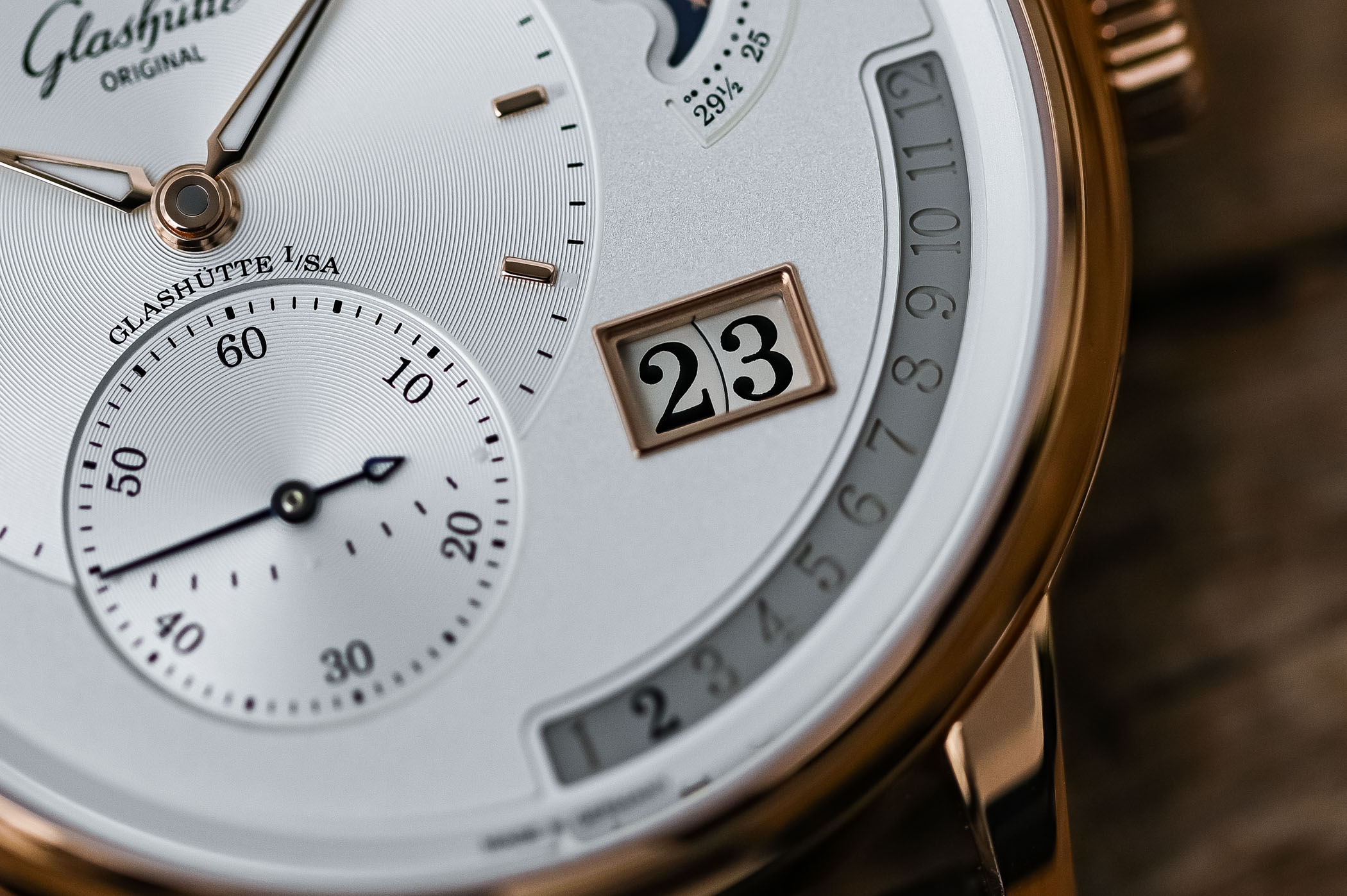
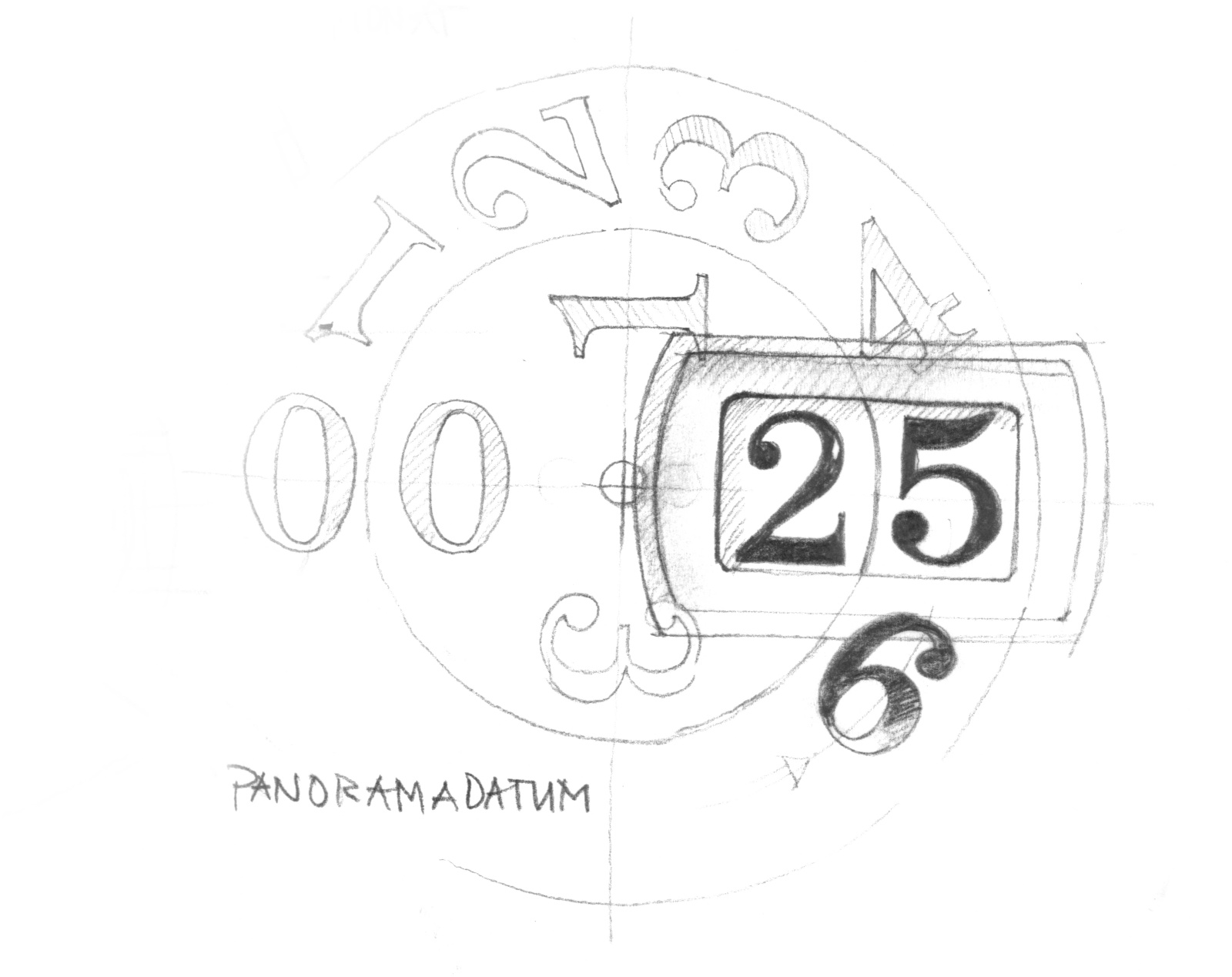
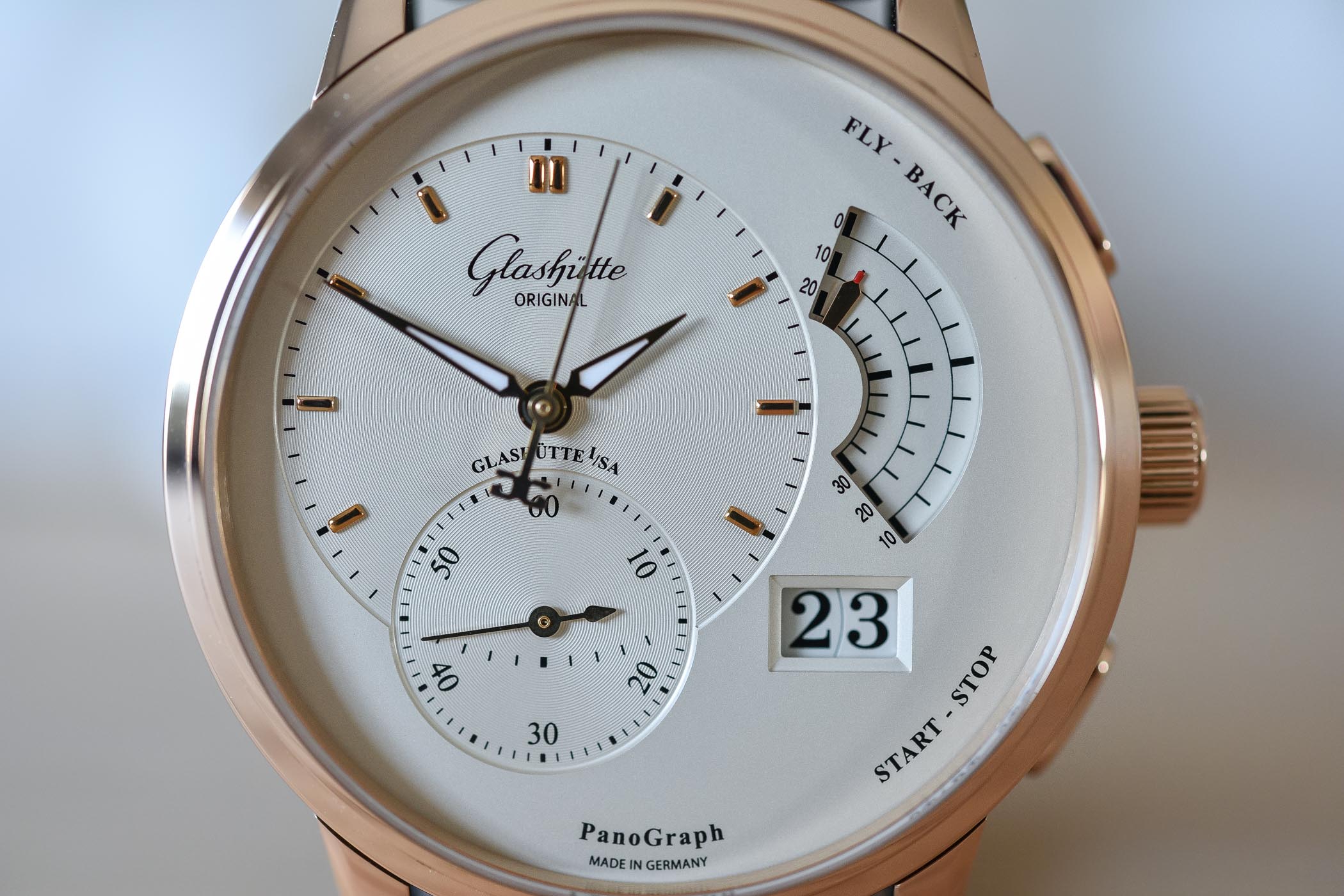
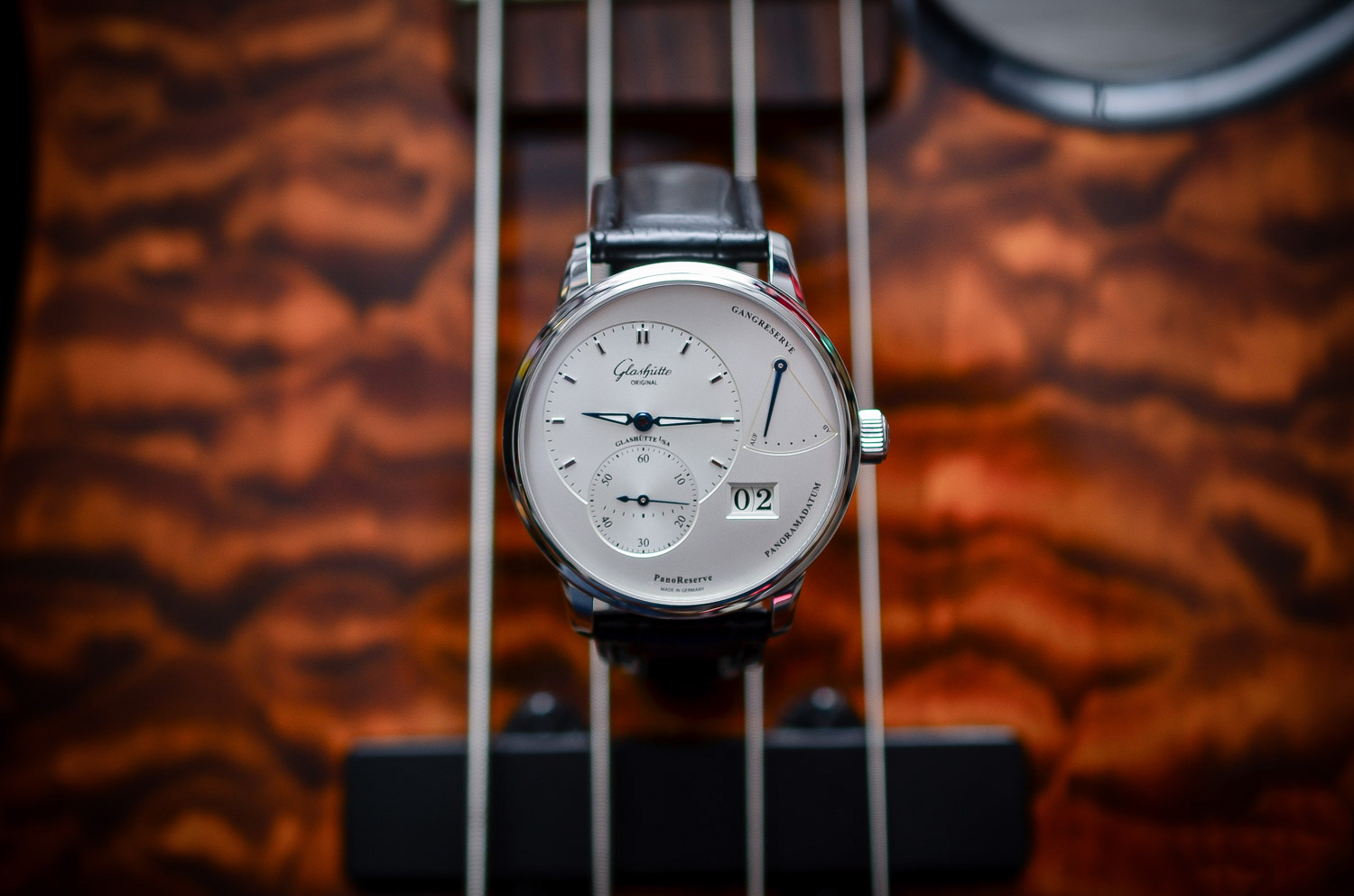


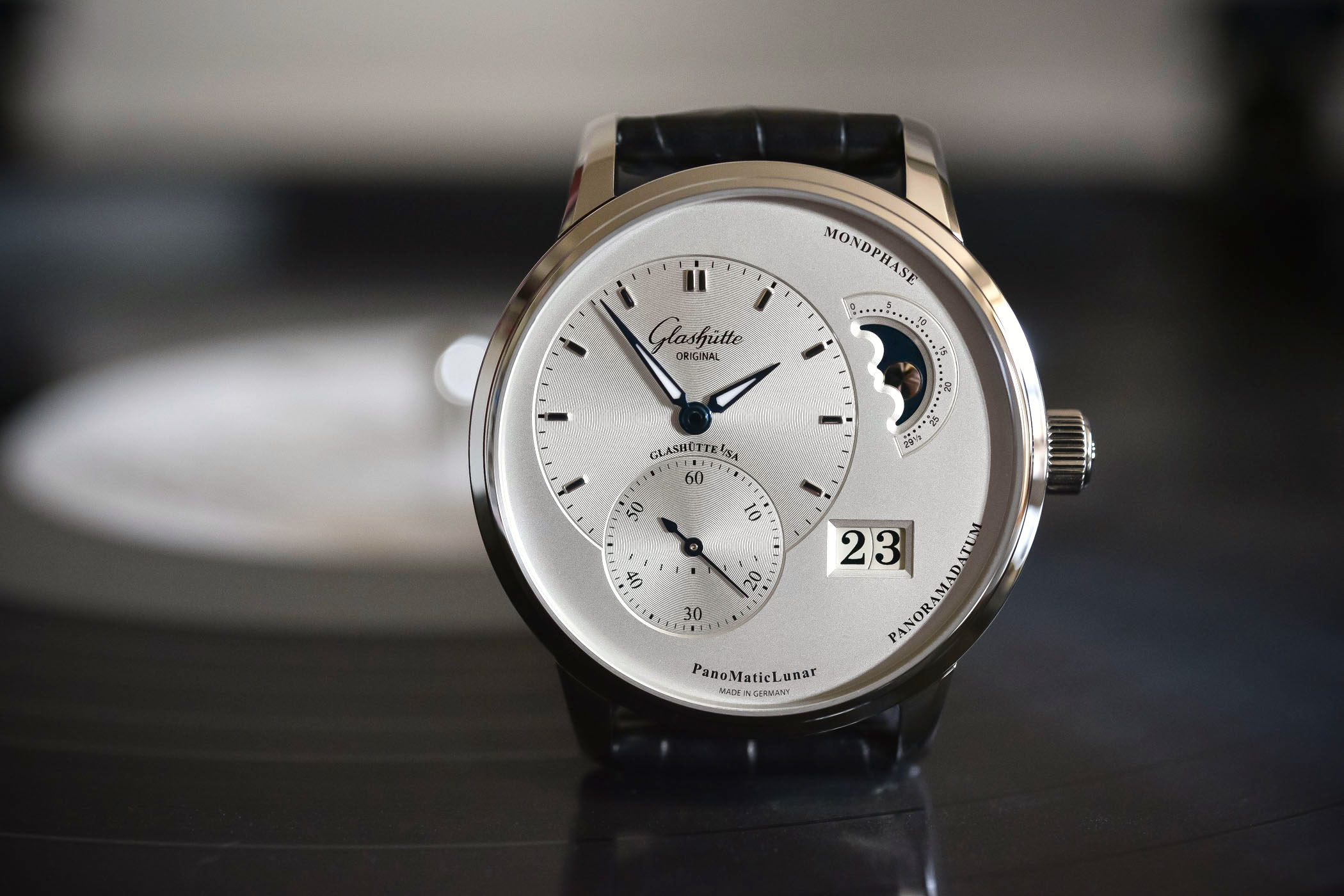
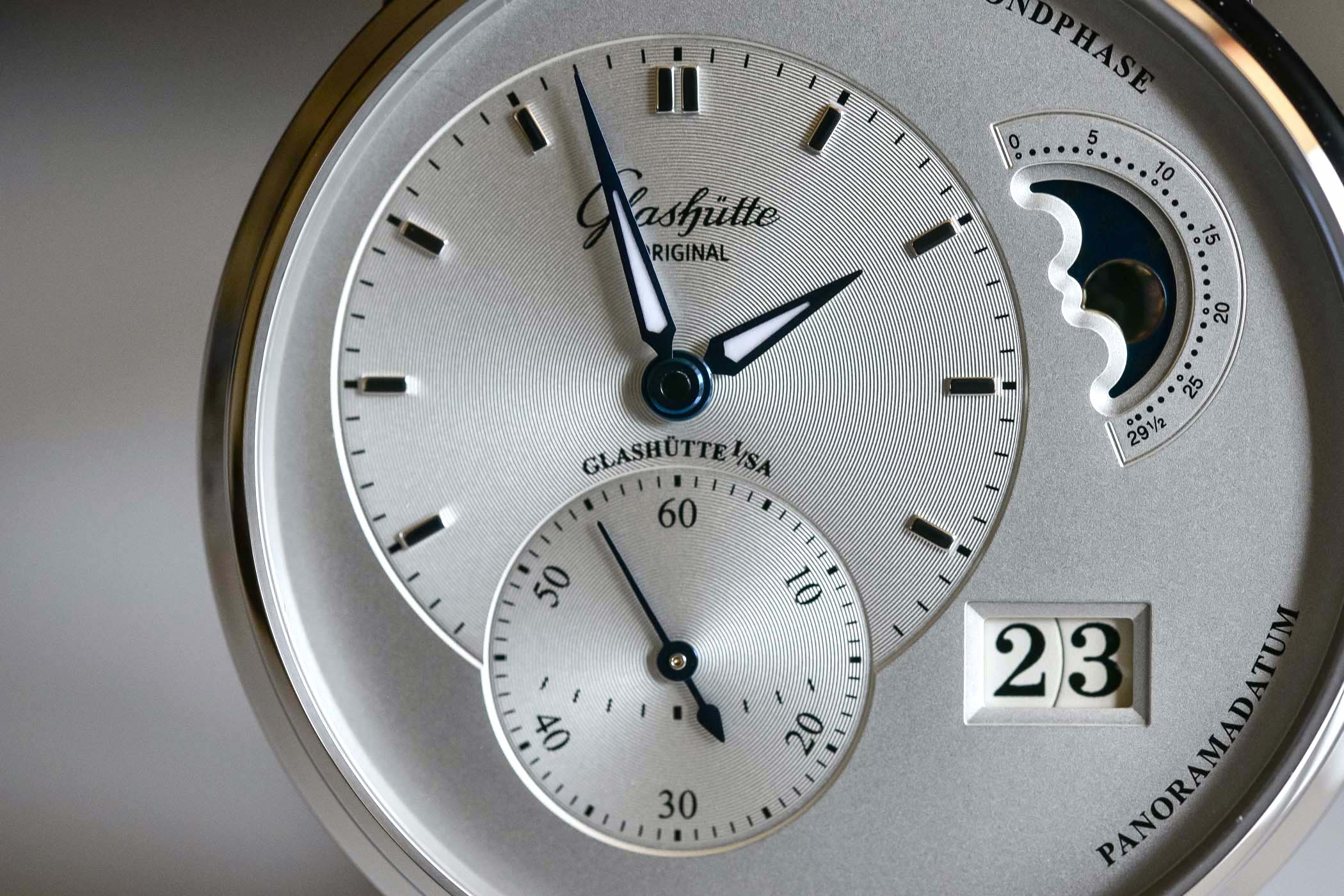
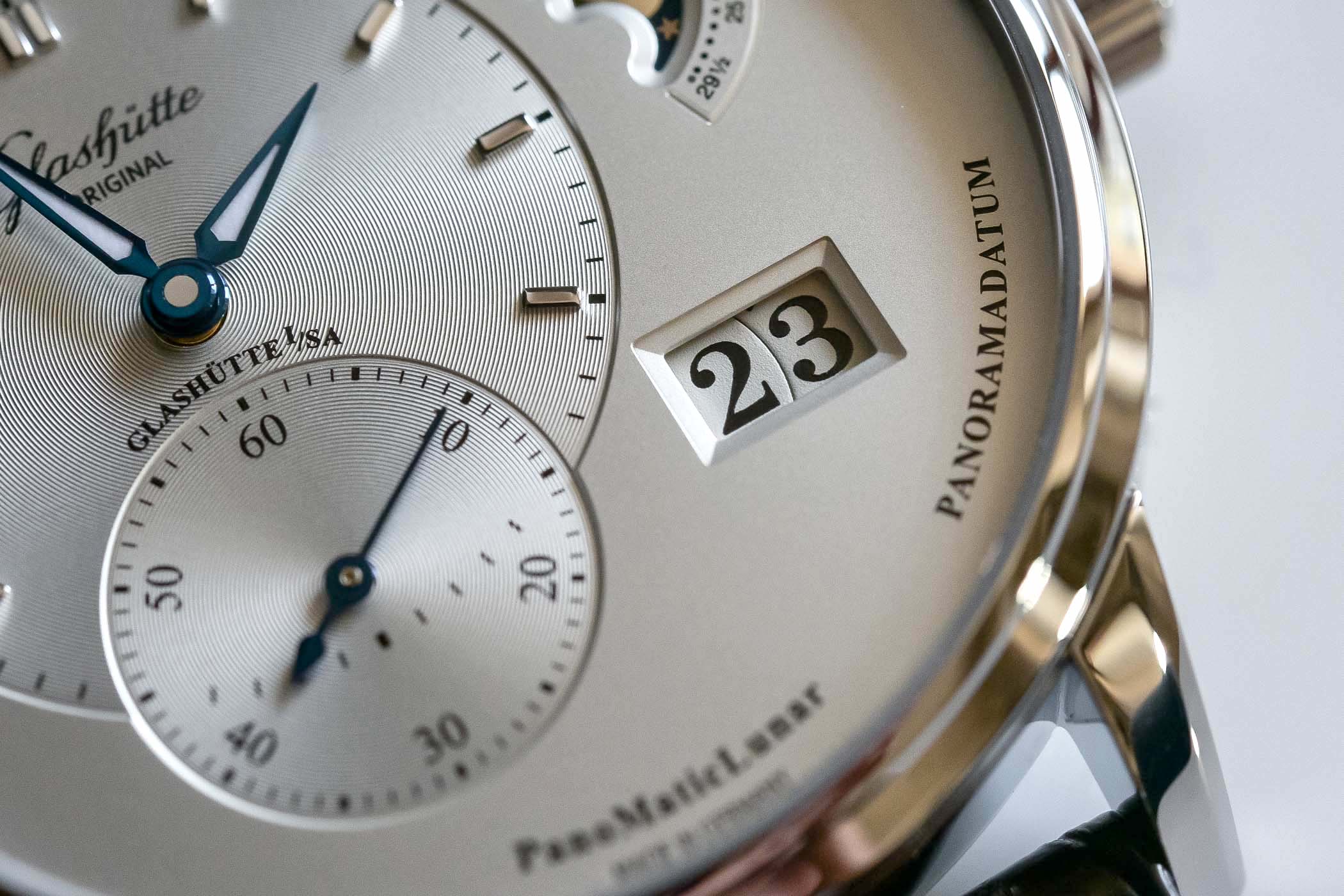
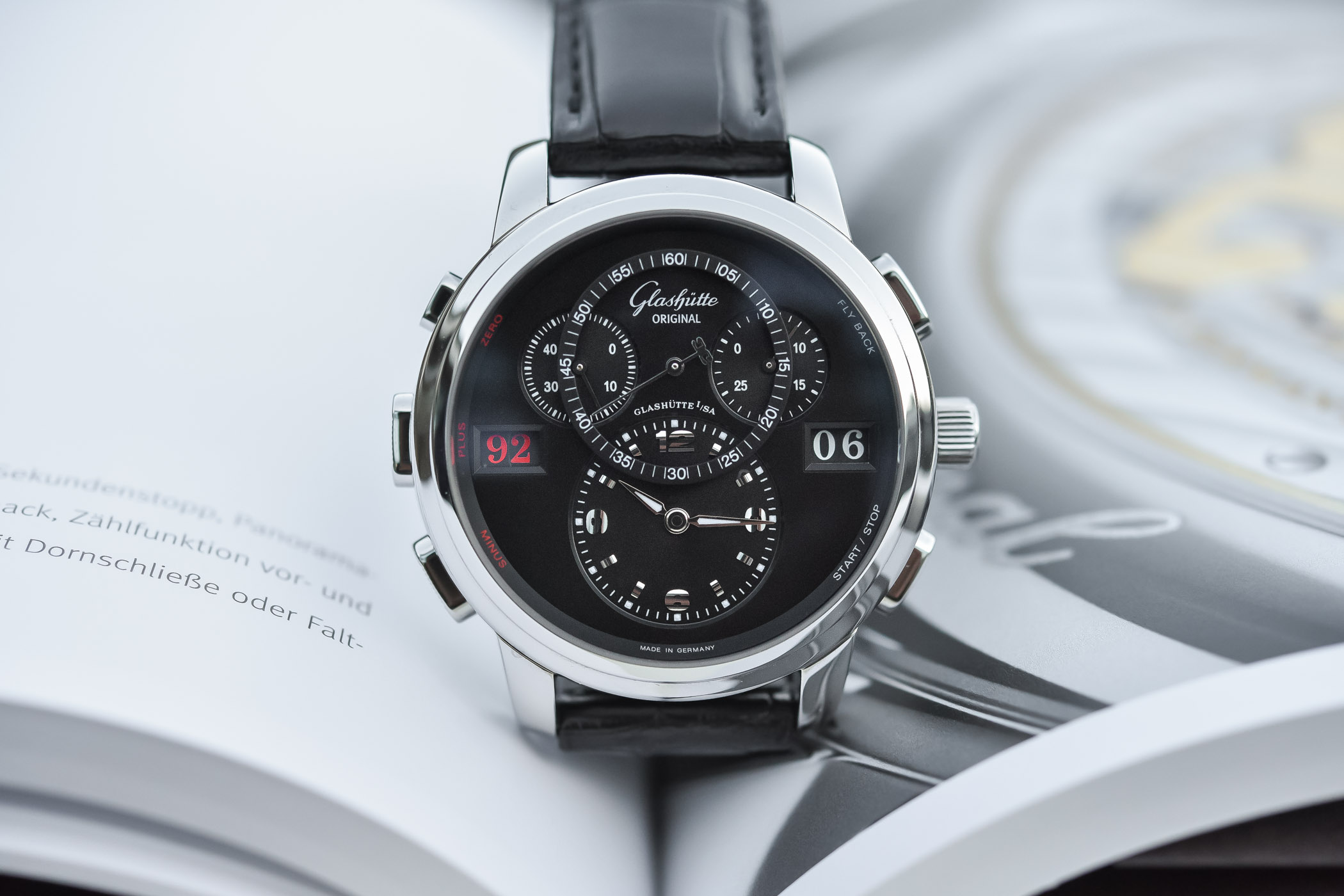
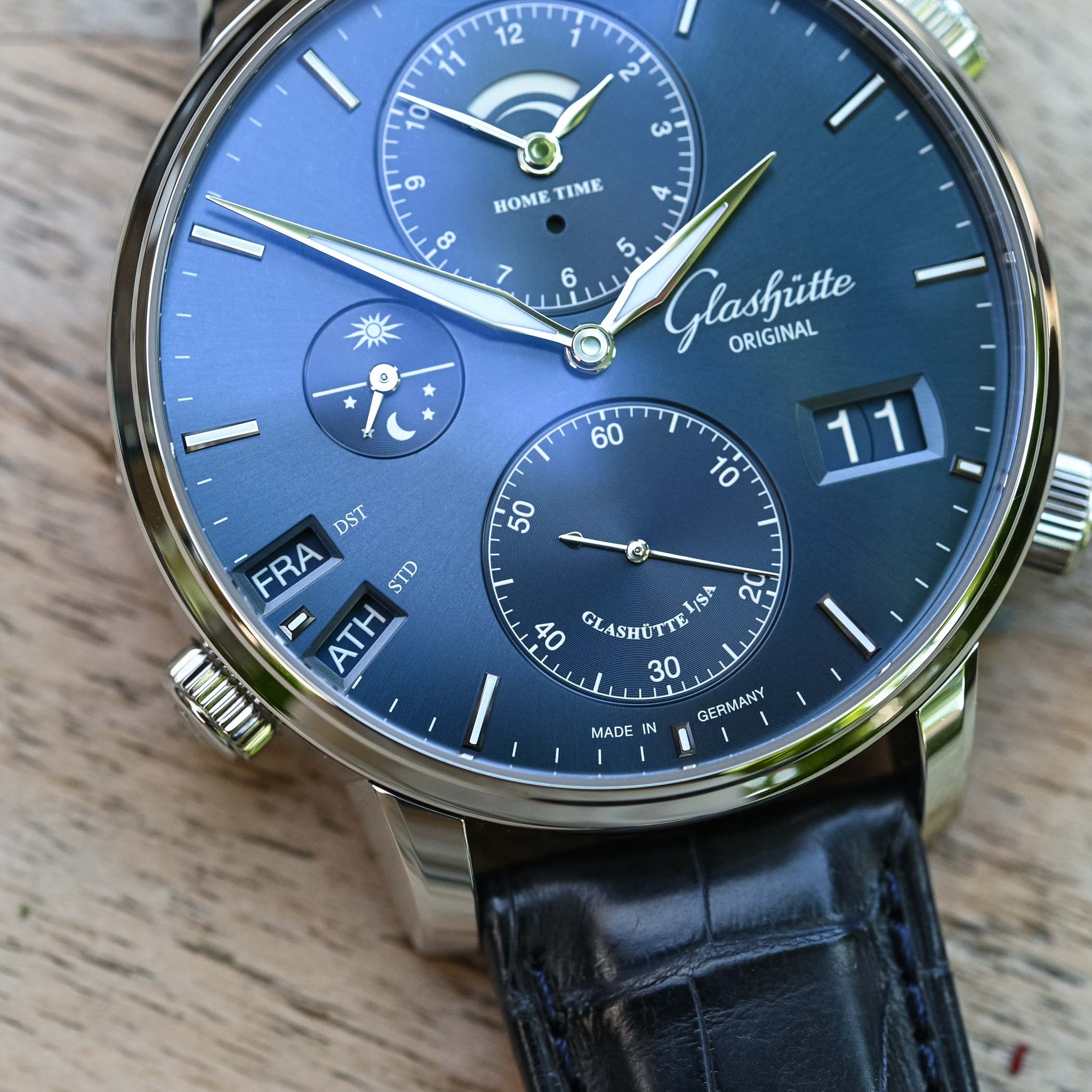
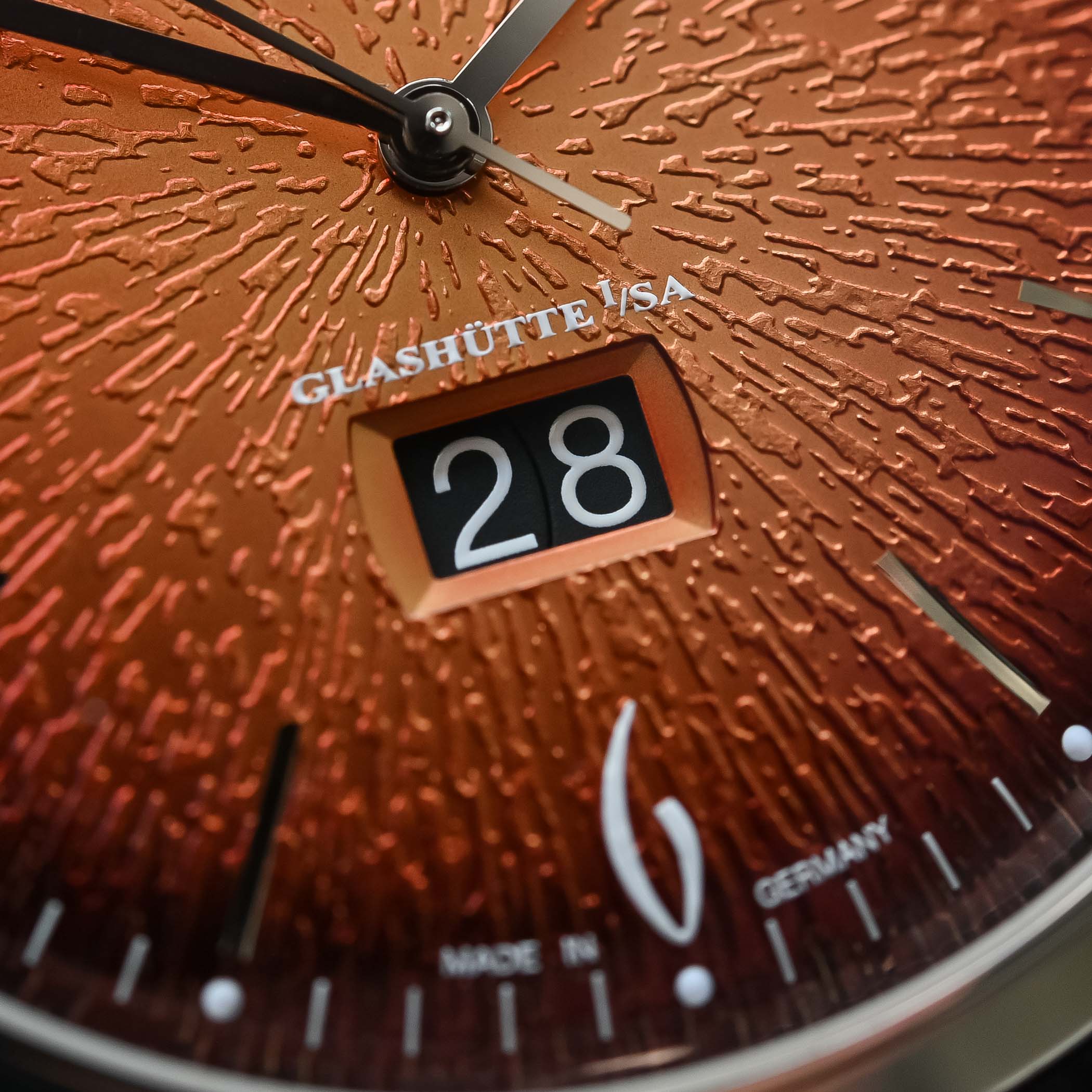
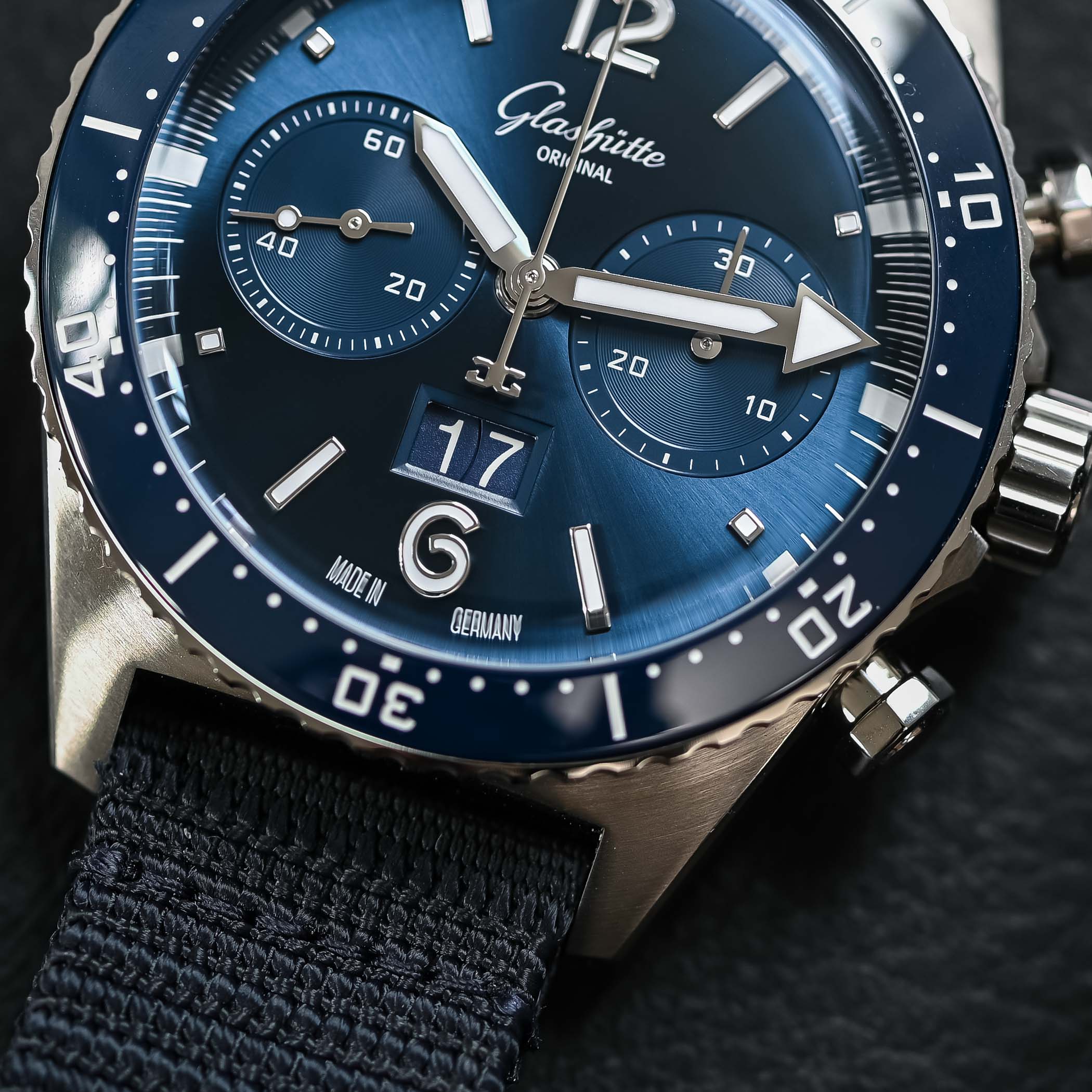
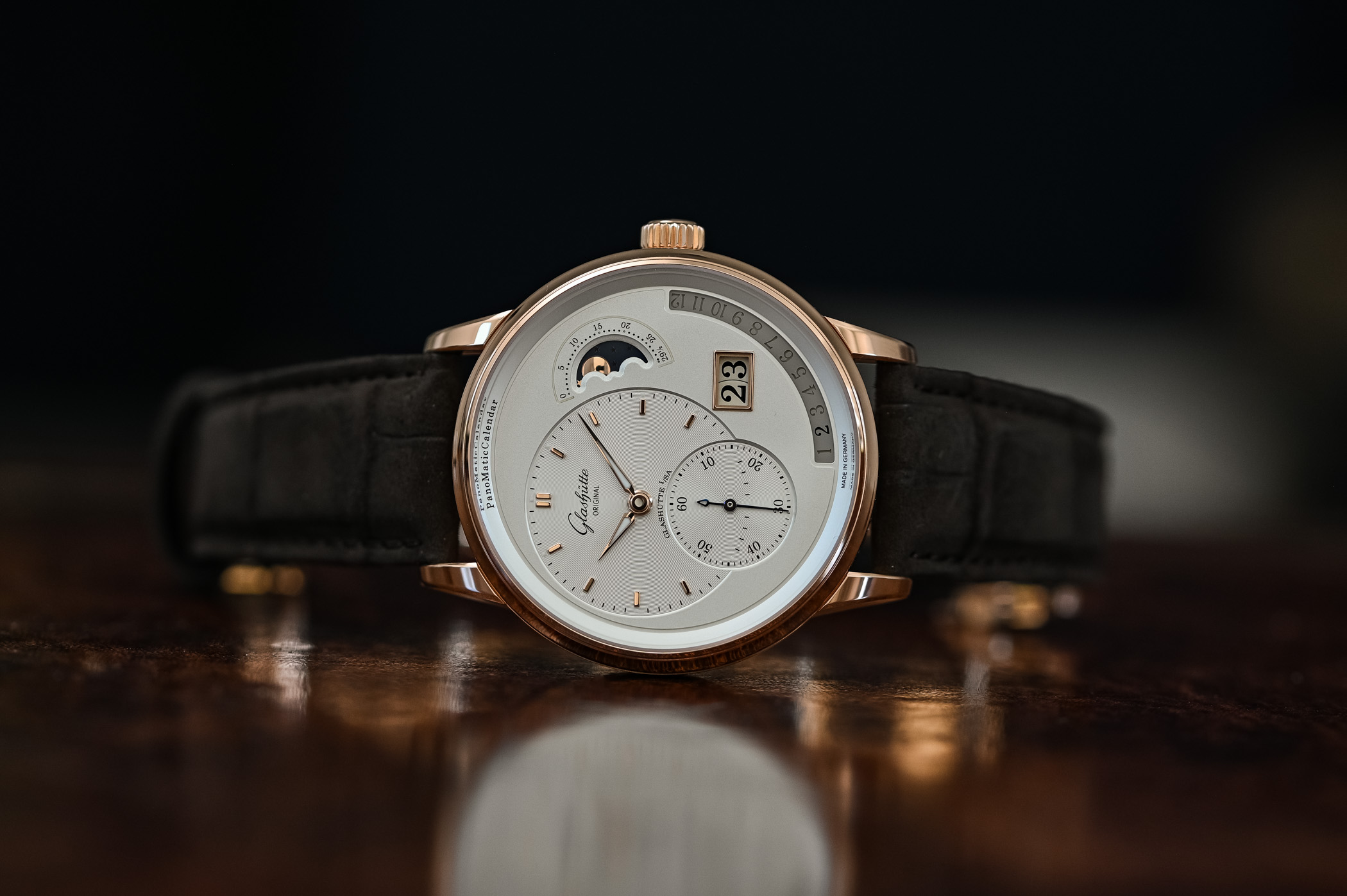
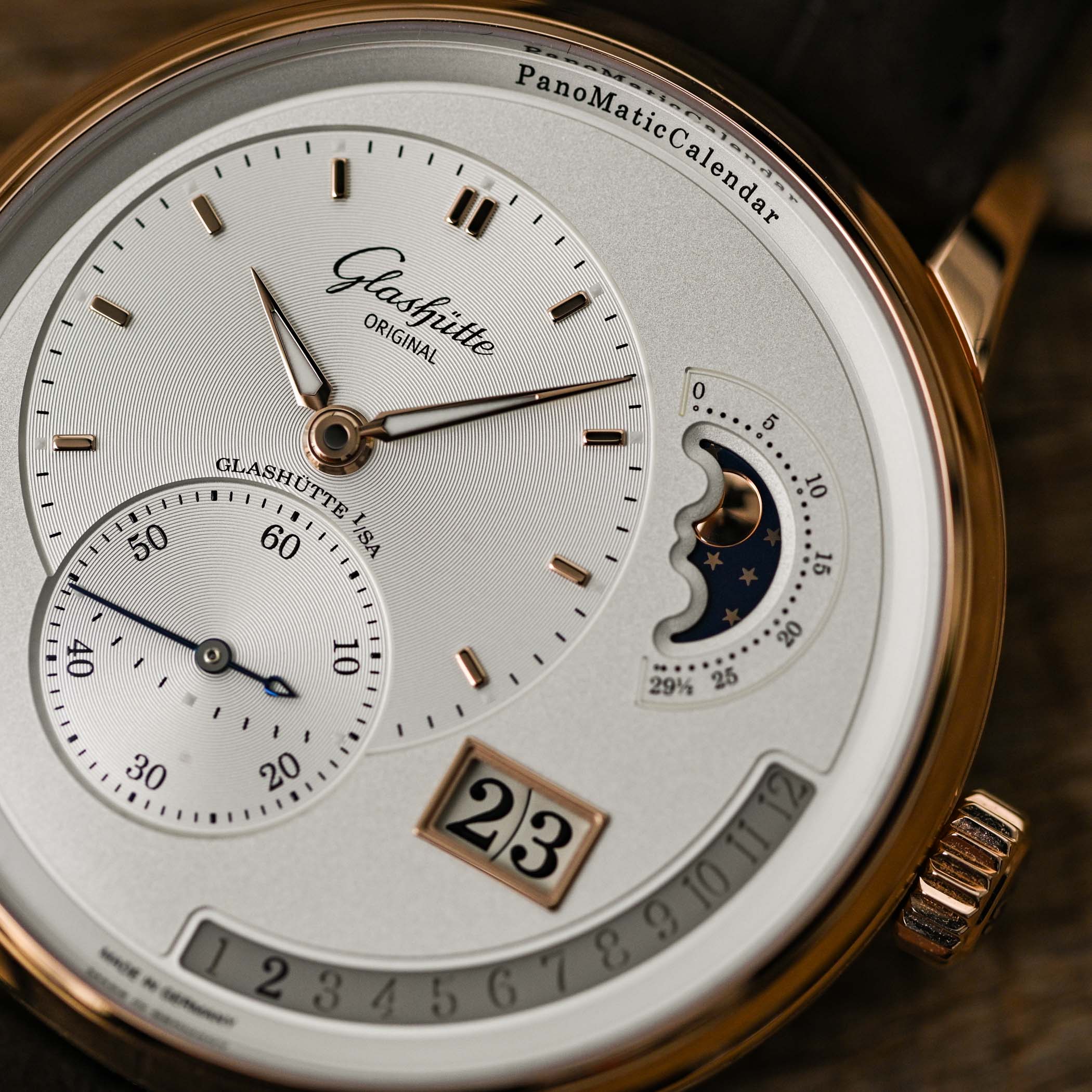

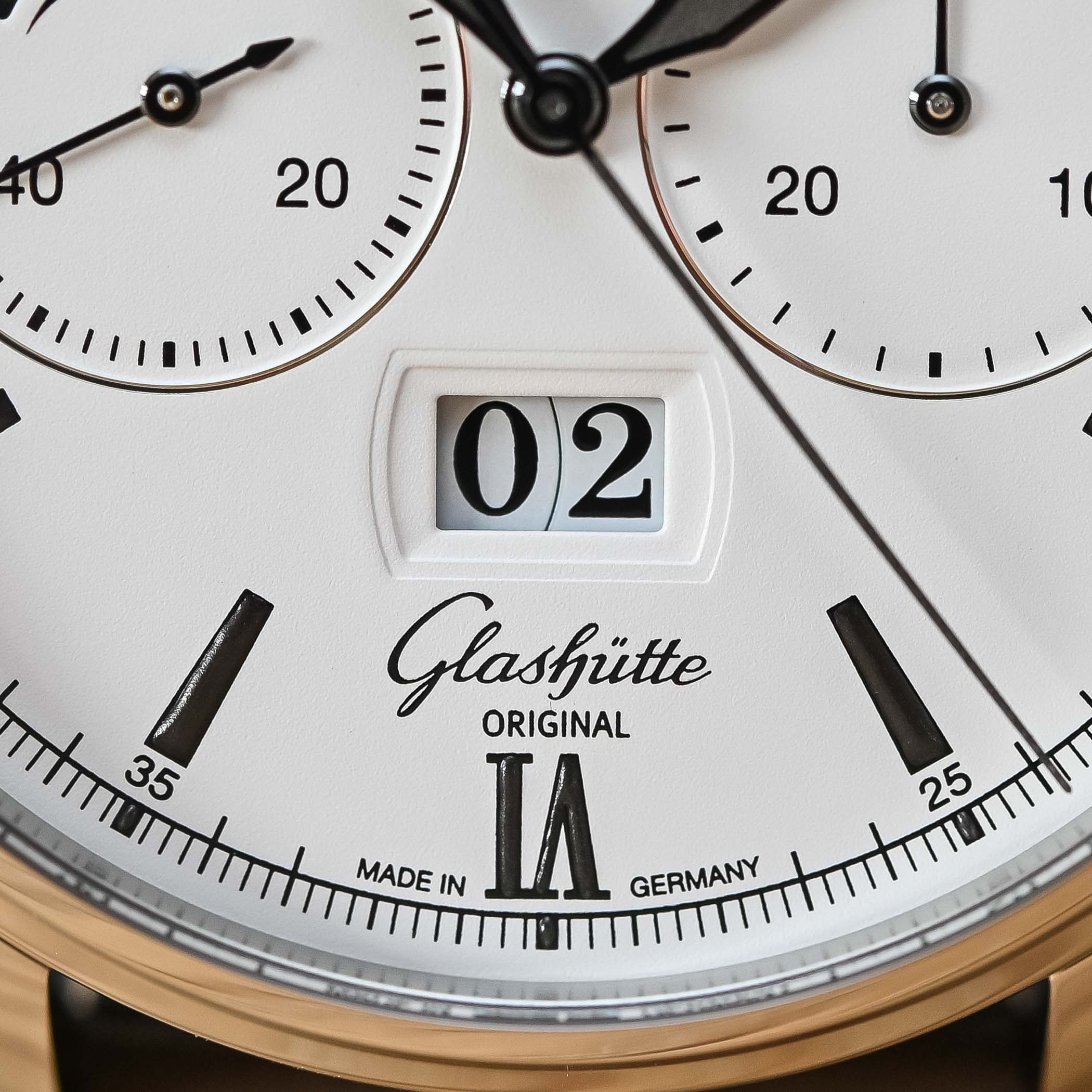



1 response
I just added the PanoMaticLunar with silver dial to my collection. It is indeed fetching.